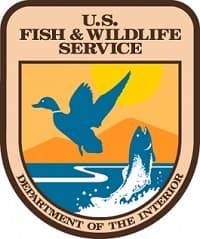Service Provides more than $47 Million in Grants to States, Territories for Sensitive, Imperiled Species
OutdoorHub 04.03.14

Sensitive and imperiled species across the nation will benefit from $47,877,598 in grants through the U.S. Fish and Wildlife Service’s State Wildlife Grants (SWG) program. The funds are apportioned annually to all states, the District of Columbia, the Commonwealth of Puerto Rico, Guam, the U.S. Virgin Islands, the Commonwealth of the Northern Mariana Islands and American Samoa. Apportionments are determined by a formula based on land area and population. States and their partners provide a non-federal funds match for projects that help species of greatest conservation need and their habitats.
“We appreciate the steady efforts of state and territorial fish and wildlife agencies and their partners to protect these imperiled wildlife species and their habitats,” said Hannibal Bolton, the Service’s assistant director for Wildlife and Sport Fish Restoration. “These partnerships deliver crucial conservation projects which, in some cases, result in species recovery instead of listing the species under the Endangered Species Act.”
The SWG program awards grants for projects that implement strategies and actions to conserve species identified in approved State Wildlife Action Plans. Funding comes from Fiscal Year 2014 appropriations for the SWG program.
SWG funds are being used to support conservation work at state and regional
levels:
- Between 2011 and 2014, Florida, Georgia, Alabama and Louisiana fish and wildlife agencies received more than $1.8 million in SWG funds for longleaf pine habitat restoration. These projects will ultimately create, enhance and protect more than 15,000 acres of quality habitat for ESA candidate species, such as the gopher tortoise.
- In Florida, partners have used SWG and nonfederal funds to improve more than 265,000 acres of habitat for threatened species such as the Florida scrub jay and other imperiled species such as the fox squirrel.
- In the Midwest and West, SWG funds have been used by partnerships of multiple states to help conserve key iconic wildlife species such as lesser prairie-chicken and Gunnison sage-grouse. These species, like most others targeted through the SWG program, have been petitioned for listing or are currently considered candidates for listing under the ESA. SWG funds help maintain sustainable populations of such species through targeted land acquisition, habitat management and direct actions such as captive breeding and release.
- Thirteen states and the District of Columbia are working to address landscape-level conservation challenges by pooling 4 percent of their apportioned SWG funds to support the Northeast Regional Conservation Needs Grant Program. The program is developing and implementing multi-partner initiatives that focus on the conservation, management and protection of species of greatest conservation need, such as the New England cottontail rabbit.
All states and territorial wildlife agencies have State Wildlife Action Plans that collectively provide a nationwide blueprint for actions to conserve sensitive and imperiled species. Conserving these species can help limit costly listings under the ESA. The plans were created through a collaborative effort among state and federal agencies, biologists, conservationists, landowners, sportsmen and sportswomen and the general public. A national team that includes Service staff as well as directors of state wildlife agencies reviews each plan.
The plans are available at http://www.teaming.com/state-wildlife-action-plans-swaps.
For more information and a list of state, commonwealth and territory funding allocations, visit http://wsfrprograms.fws.gov/Subpages/GrantPrograms/SWG/SWG.htm

